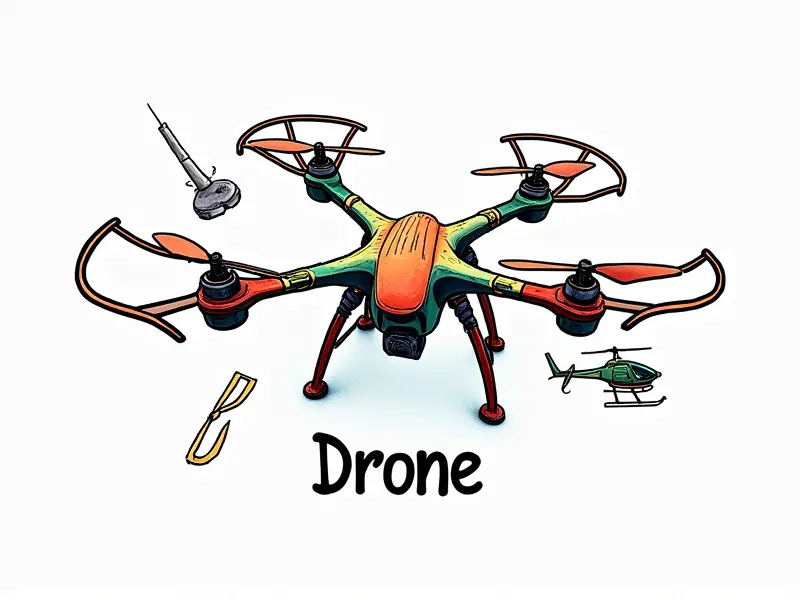Is FPV flying safe for kids?

First-person view (FPV) drone flying has gained immense popularity among enthusiasts, including young flyers. However, concerns about safety are paramount when it comes to kids engaging in this high-speed hobby. This article explores the benefits and risks of FPV flying for children, provides essential safety tips, and guides parents on how to set up safe environments for their kids.
Should Kids Try FPV Racing Drones?
The allure of FPV racing drones is undeniable, with their ability to provide an immersive experience that mimics the thrill of real-world racing. But should children be allowed to partake in this exhilarating hobby? The answer isn't straightforward and depends on several factors including age, maturity level, and parental supervision.
Benefits & Risks of Kids Doing FPV
Benefits:
- Cognitive Development: Flying drones enhances spatial awareness and problem-solving skills.
- Motor Skills: The precision required for controlling a drone helps improve hand-eye coordination.
- Technical Knowledge: Kids learn about technology, electronics, and programming through hands-on experience.
Risks:
- Injury Risk: High-speed crashes can lead to injuries such as cuts, bruises, or even more severe accidents.
- Equipment Damage: Expensive drones and accessories may be damaged during reckless flying.
- Lack of Experience: Inexperienced flyers might not understand the risks involved in FPV flying.
Safety Tips for Kid's FPV Flying
To ensure a safe experience, follow these guidelines:
- Supervision: Parents or guardians should always be present to monitor and guide the child’s activities.
- Training: Provide thorough training on drone operation and safety protocols before allowing independent flying.
- Gear Up: Use protective gear like helmets, goggles with integrated cameras, and impact-resistant clothing.
Age Appropriate FPV Drone Activities
Different age groups have varying levels of maturity and physical capabilities. Here’s a breakdown by age:
- Toddlers (Ages 3-5): Start with simple toy drones that are safe for indoor play.
- Kids (Ages 6-12): Introduce more advanced but still beginner-friendly FPV drones suitable for outdoor flying under supervision.
- Tweens & Teens (Ages 13+): Allow access to higher-speed racing drones and encourage participation in organized leagues with safety guidelines.
Legalities of Kids Using FPV Drones
The legal landscape varies by region, but common regulations include:
- Airspace Regulations: Check local laws regarding airspace usage for drones.
- No-Fly Zones: Avoid flying near airports, military bases, and other restricted areas.
- Data Privacy: Be mindful of privacy concerns when filming or recording in public spaces.
Risks of FPV Drone Flying for Teens
Tweens and teens are more likely to engage in risky behaviors due to their developmental stage. Key risks include:
- Speeding Violations: Racing drones at excessive speeds can lead to dangerous crashes.
- Social Pressures: Peer pressure might encourage teens to take unnecessary risks with their equipment and safety.
Parent's Guide to FPV Flying
Parents play a crucial role in ensuring the safe enjoyment of this hobby. Here’s what parents should consider:
- Educate Yourself: Learn about drone technology, safety rules, and best practices.
- Set Boundaries: Establish clear guidelines for when and where flying is allowed.
- Foster Responsibility: Encourage kids to take ownership of their equipment’s maintenance and safe use.
Setting Up Safe FPV Environments for Kids
A controlled environment can significantly reduce risks. Consider these setups:
- Designated Flying Areas: Create a secure, enclosed space free from obstacles and bystanders.
- Obstacle-Free Zones: Ensure there are no trees, power lines, or other hazards nearby.
Protective Gear for Junior FPVers
Investing in the right gear is crucial. Essential items include:
- Helmets: Full-face helmets provide head protection during crashes.
- Goggles with Cameras: Ensure visibility and a secure fit to prevent accidents.
- Impact-Resistant Clothing: Protect against cuts, bruises, and other injuries.
Teaching Kids Responsible FPV Flying
Cultivating responsible behavior starts with education. Teach kids about:
- Safety First: Prioritize personal safety over winning or breaking records.
- Maintenance: Regularly check and maintain equipment to prevent malfunctions.
- Ethics: Respect privacy laws and adhere to community guidelines.
Conclusion
FPV flying can be a thrilling and educational experience for kids when approached with the right mindset and precautions. By understanding the risks, providing proper training, and setting up safe environments, parents can help their children enjoy this exciting hobby responsibly. With guidance and supervision, FPV racing drones offer an engaging way to foster technical skills while ensuring safety.

